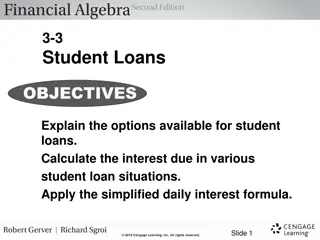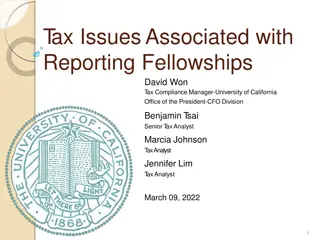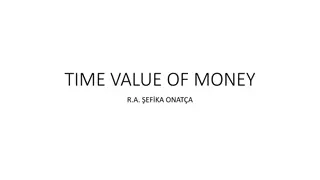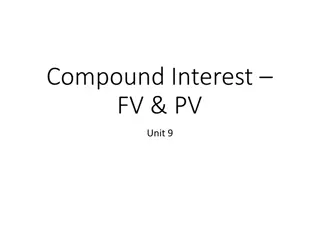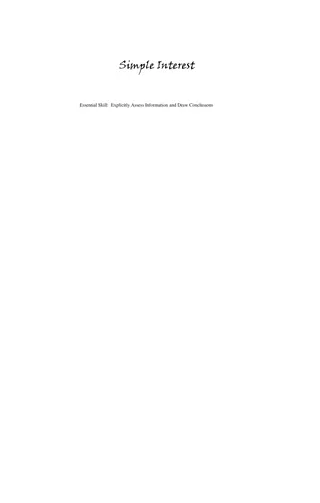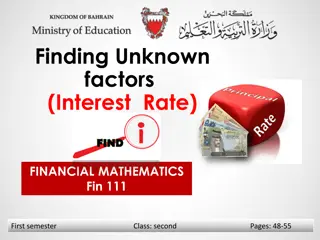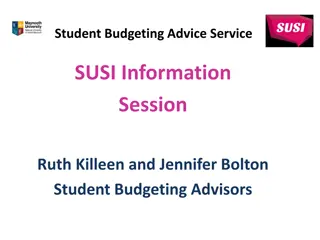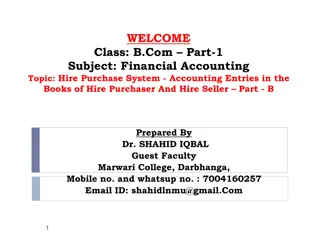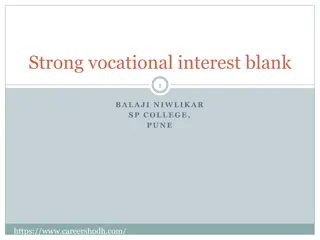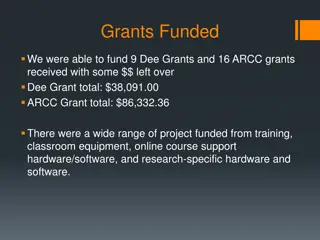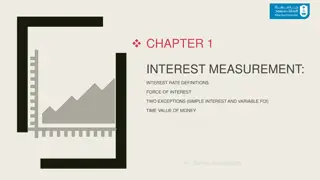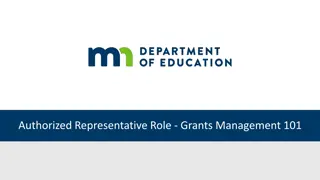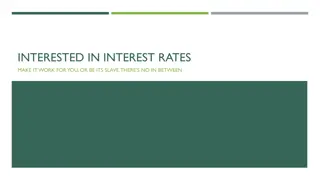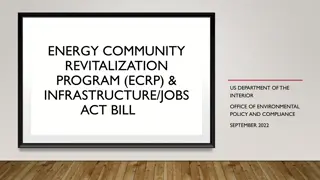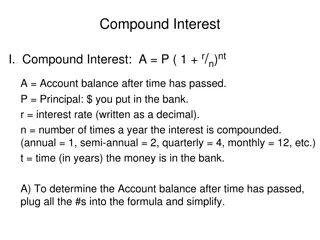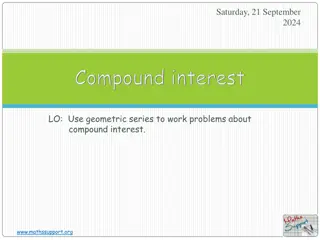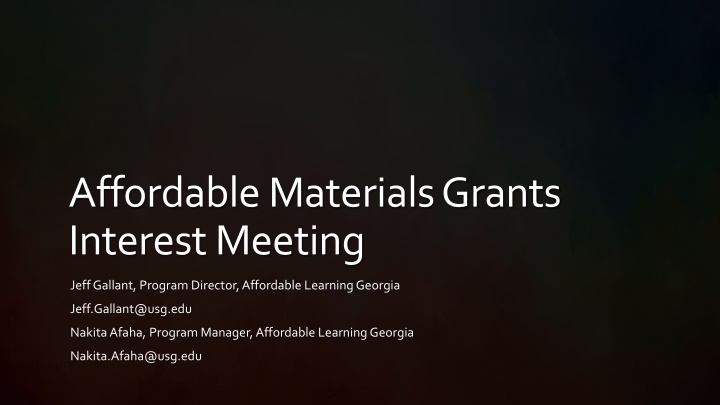
Affordable Materials Grants for Transformation Projects in Georgia
Explore the Affordable Materials Grants program in Georgia, offering opportunities for faculty to switch from commercial textbooks to OER and affordable resources. Learn about the application process, eligibility criteria, and the impact on student savings.
Uploaded on | 0 Views
Download Presentation

Please find below an Image/Link to download the presentation.
The content on the website is provided AS IS for your information and personal use only. It may not be sold, licensed, or shared on other websites without obtaining consent from the author. If you encounter any issues during the download, it is possible that the publisher has removed the file from their server.
You are allowed to download the files provided on this website for personal or commercial use, subject to the condition that they are used lawfully. All files are the property of their respective owners.
The content on the website is provided AS IS for your information and personal use only. It may not be sold, licensed, or shared on other websites without obtaining consent from the author.
E N D
Presentation Transcript
Affordable Materials Grants Interest Meeting Jeff Gallant, Program Director, Affordable Learning Georgia Jeff.Gallant@usg.edu Nakita Afaha, Program Manager, Affordable Learning Georgia Nakita.Afaha@usg.edu
Affordable Materials Grants use University System of Georgia (USG) funding and can only be awarded to teams located at USG institutions. Non-USG participants on a USG institution s team are welcome! Institutions usually add non-USG participants as a contractor. Before we start, a quick USG heads-up: Multi-USG institution projects, as always, are welcome. Savings listed in a Transformation Grant application must contain only USG institution student savings estimates due to the impact we re measuring as a USG program. If you re from a non-USG institution and just want to listen, that s fine you re welcome as well! Feel free to send us questions about the program via email after too.
Introduce Yourself! In chat, please share: Your institution / department First time with ALG or returning? Why are affordable / open resources important to you?
For applications and the RFP: Apply for a Grant https://www.affordablelearninggeorgia.org/grants/apply -for-a-grant/ To see all previous projects, including proposals: Grants Archive First, some helpful links: https://www.affordablelearninggeorgia.org/grants/archi ve/ To find your institution s ALG Champions: Staff and Champions https://www.affordablelearninggeorgia.org/about- us/staff-and-champions/
Affordable Materials Grants: Transformation Grants
Transformation Grants are opportunities for individuals or teams of faculty and professional staff to transform courses with commercial textbooks to courses using OER and other affordable materials. What are Transformation Grants?
# Students per semester Summer, Fall, Spring Annual Students (sum of above) Original cost of required materials New cost of required materials (usually $0 unless it s a low-cost project) Savings per student affected (per enrollment in one course!) Annual Savings Annual Students x Savings per student Transformation Grants include Savings Estimates
Transformation projects have specific funding guidelines: $5,000 maximum award per individual team member for salary, course release, travel, etc. Additional project expenses allowed, but must be justified in proposal budget $30,000 maximum total award per grant Funding Structure See the RFP for more details.
You can incorporate project expenses (such as authoring tools/platforms, equipment, travel) into the grants. If you do, please make this very clear in the budget section and explain why those expenses are necessary for project success within your plan. What if I have other project costs?
Continuous Improvement Grants
Continuous Improvement Grants are opportunities for individuals or teams to improve low-cost/no-cost materials courses through the revision of OER or the creation of new OER. What are Continuous Improvement Grants?
Continuous Improvement Defined Continuous Improvement Grants are not awarded simply for doing routine course revision work. They need to include: A substantial revision of existing OER through updates for accuracy, accessibility, clarity, design, and compatibility (formatting, code, etc.) The creation of new OER, from texts to ancillary materials, to improve the course Continuous Improvement Grants Explained (For our purposes, ancillary materials are any materials created to substantially support the instruction of a course using existing open, no-cost, or low-cost resources.)
Continuous Improvement Grants also have specific guidelines for funding: $2,000 maximum per team member for salary, course release, travel, etc. Additional project expenses allowed, but must be justified in proposal budget $10,000 maximum total award per grant Funding Structure See the RFP for more details.
Research Grants are opportunities to explore research questions related to ALG; mainly Open Education and affordable materials-related topics. What are Research Grants?
Research projects in this subcategory must address one or more aspects of the Open Education Group s COUP Framework (Cost, Outcomes, Usage, and Perceptions). Research Grants Overview Research Projects will end with a Research Report due at the end of the Final Semester of the project. Research reports will be shared in an ALG repository under a Creative Commons Attribution License 4.0. Supplementary files, such as data sets, will not be shared in the repository (unless teams want them to be shared!)
Standard set of information about the project team Two or three paragraph summary of the project: oMajor goals and objectives, research questions oResearch design, methods, analytical and data analysis techniques oFindings and expected applicability of the findings Description (but not a replication) of any supplementary files provided to ALG such as data sets Future plans (publications, conference papers, websites, databases) Research Report Outline
IRB Grant teams are expected to understand their IRB guidelines and procedures before applying, and to work with their institution s Institutional Review Board (IRB) on the approval of any research activities in these projects. Research Report Considerations Journal Article Publication Research Grants teams are encouraged to publish their findings in peer-reviewed journals after the end of the project. Open Access (OA) publications are preferred in order to increase access to research materials, but due to varied OA options and tenure/promotion procedures within different disciplines and institutions, OA publishing is not a requirement.
Same as CI Grants: $2,000 maximum per team member for salary, course release, travel, etc. Additional project expenses allowed, but must be justified in proposal budget $10,000 maximum total award per grant Funding Structure See the RFP for more details.
Round 27: Projects Ending Round 27: Projects Ending Spring Monday, March 10: Application Deadline Tuesday, March 11 - Monday, March 31: Reviews Tuesday, April 1: Notifications Monday, April 7: Agreements Sent for Signatures Friday, May 2: Kickoff Meeting (virtual) Friday, January 16, 2026: Midpoint Check-In Friday, May 15, 2026: Reports and Materials Due Spring 2026 2026 Timeline: R27
At least one team member will participate in the requiredonline synchronous kickoff meeting and the midpoint check-in meeting. All members are required to participate in a web-based asynchronous training. (If you ve completed the asynchronous training within a year, you re exempt from this requirement.) Kickoff Requirements
Were about to run through how to apply for a grant. Before that happens, any questions about what we just went through? Before we move on
1. Bookmark the Apply for a Grant Page. 2. Be sure to read through the RFP and your category s rubrics. 3. Complete the appropriate offline .docx proposal. 4. Get your Letter of Support and Acknowledgment Forms signed and ready. 5. Officially apply using the online form linked on the Apply for a Grant Page with your completed .docx proposal, letter, and form. How to Apply
Application Walkthrough
More Details (If we have time)
Transformation Grants Weighted Rubric You can find the rubrics linked on Apply for a Grant.
Continuous Improvement Grants Weighted Rubric You can find the rubrics linked on Apply for a Grant.
Research Grants Weighted Rubric You can find the rubrics linked on Apply for a Grant.
Are there any errors? Transformation Grants: check your numbers! Hint: Run your application by a peer reader. Does the budget meet the guidelines? Accurate budget at/under the maximum per team member At/under the maximum per grant project (Transformation) Does the savings impact of the project align with the budget? Look at the one-year savings estimates in relation to how much the project costs. Does the team have a plan to share their new materials? D2L isn t open you need to have another plan. We host materials, but we ll need to have those materials in order to share them. How will you share them? Other Considerations
Priority Categories (Transformation Grants Only!)
The following priority categories receive some priority (in extra points) for fitting a strategic goal of ALG. These are not requirements for applying for a grant the most important factors in being awarded are impact and the quality of the application/plan. Priority Categories
Grants in this category involve at least one collaborator outside the team of course instructors. These team members might include: instructional designers librarians OER publishers instructional technologists web designers programmers graphic designers Collaborative Projects with Professional Support
Involving students in content creation, remixing, editing, and evaluation of resources is one way to enhance student learning while increasing student agency in the classroom. Grants in this category will include students as active participants. Student Participation in Materials Creation, Adaptation, and Evaluation
Grants in this category will implement open, no-cost, or low-cost materials on a department-wide, all-sections scale. Note: there must be a commitment from the department to at least pilot the project in all sections for this category; solely the potential for departmental scaling does not qualify for this priority. Department Scaling Projects
In order to address the gap in OER and no-/low-cost resources in upper- level undergraduate and graduate courses with smaller enrollment numbers, we are encouraging these teams to collaborate across institutions. Grants in this category will involve collaboration between institutions for upper-level courses. Upper-Level Campus Collaborations
How Funding Works
Funding goes to the institution to cover the team member s time, project expenses including related department needs, and travel expenses per your Proposal / Statement of Work and their policies. Funding process through Service Level Agreement (SLA), 50% on execution, 50% Final Report Funding
Institutions (typically grants, research, and/or business offices) will be responsible for fund disbursement, including salary, expense, and travel reimbursement. Budgets will be supported by state funds and therefore institutions spending project money must ensure compliance with state, BOR and institutional policies and procedures. This does not usually include the more extensive guidelines for federal or external grants, but your institution may vary on this. Funding: Additional Guidelines
These grants cannot include indirect expenses. Direct expenses (allowed) fund the project directly: salary, fringes that go with salary (healthcare, taxes, etc.), project supplies, software, etc. Indirect expenses (not allowed) fund the institution s infrastructure to support an external project: F&A (facilities and administration) are the most common indirect expenses. Funding: Direct Only
Thank you! For questions, contact: Jeff.Gallant@usg.edu Nakita.Afaha@usg.edu


